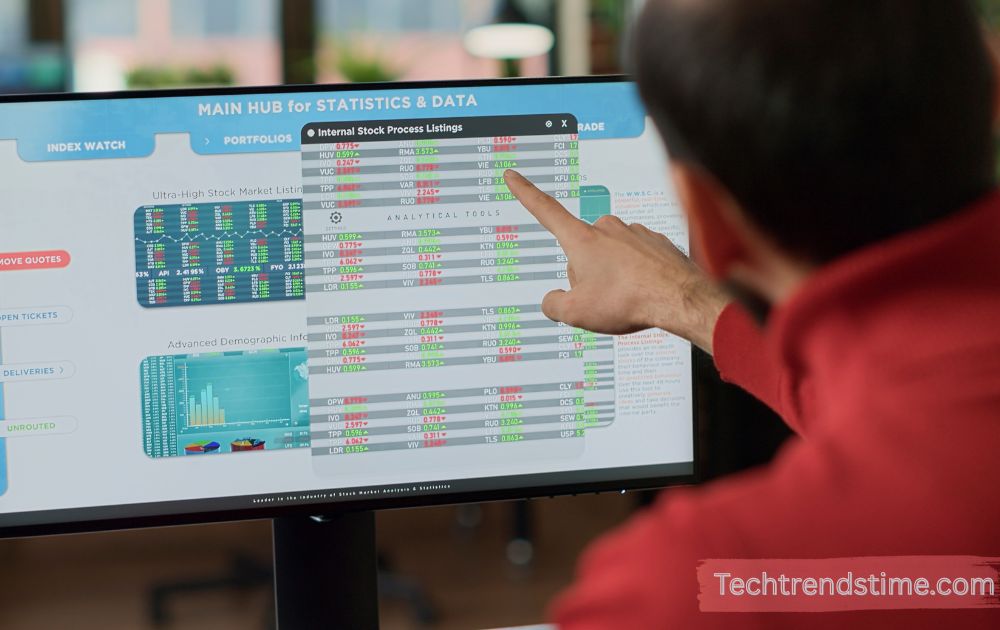In the ever-evolving world of technology, application migration has become a critical component of digital transformation strategies. Whether it’s shifting to the cloud, moving between service providers, or upgrading outdated systems, businesses are increasingly embracing application migration to cloud to enhance performance, reduce costs, and stay competitive.
What Is Application Migration?
Application migration refers to the process of moving software applications from one environment to another. This can include moving from an on-premises server to the cloud, switching from one cloud provider to another, or upgrading to a newer platform. The main goal of migrating apps to the cloud is to improve efficiency, reliability, and scalability while reducing costs and technical debt.
Why Application Migration Matters
In today’s digital era, businesses rely heavily on applications to operate and grow. Outdated infrastructure and legacy systems can’t always support modern needs. That’s where application migration to cloud checklist comes in enabling organizations to modernize operations, streamline IT management, and ensure business continuity.
Types of Application Migration
There’s no one-size-fits-all approach to application migration. Here are the five most common types:
Lift-and-Shift Migration
This is the simplest form of application migration to cloud, where applications are moved to a new environment without any modification. It’s fast but may not utilize the full benefits of the new platform.
Replatforming
A step beyond lift-and-shift, replatforming modifies certain components to optimize performance in the new environment while maintaining the application’s core structure.
Refactoring
Refactoring involves rewriting parts of the application to better fit the target environment. It’s more complex but allows businesses to fully leverage cloud-native features during migrating apps to the cloud.
Rebuilding
In some cases, it’s more efficient to completely rebuild the application. This type of application migration strategy is costly and time-consuming but results in a highly optimized, modern system.
Replacing
Sometimes, replacing legacy systems with modern off-the-shelf applications is the best move. This form of application migration eliminates outdated software and introduces scalable, cost-effective alternatives.
Top Reasons to Consider application migration to cloud
In today’s fast-paced digital world, staying ahead of the curve often means leaving old systems behind. Application migration isn’t just a trend it’s a smart business move. Here are the top reasons why organizations across industries are turning to application migration as a core strategy for growth and modernization:
- Cost Savings: Legacy systems are expensive to maintain. Application migration to the cloud or newer systems helps businesses reduce operational and infrastructure costs.
- Performance Improvement: Modern environments offer superior processing power, speed, and reliability. Application migration often leads to better system performance.
- Scalability: Cloud-based platforms allow easy scaling based on demand. Migrating apps to the cloud supports business growth by enabling flexible scaling.
- Security and Compliance: Many legacy systems lack modern security features. Through application migration, businesses can adopt secure, compliant platforms.
- Support for Remote Work: Modern infrastructure supports mobile access and remote collaboration key benefits achieved through successful application migration.
Planning an Application Migration Project
Before beginning any application migration, you need a clear, strategic plan.
Assess Your Existing Environment
Start by auditing all your applications. Determine which ones are outdated, redundant, or suitable for application migration to cloud checklist.
Define Your Goals
Clarify what you want from the application migration to cloud lower costs, faster performance, better security?
Choose the Right Migration Type
Select a method (lift-and-shift, refactor, etc.) based on your application complexity and business needs.
Select Your Target Environment
Decide whether you’re moving to AWS, Azure, Google Cloud, or another platform. Your application migration success depends on compatibility and available features.
Prepare a Migration Timeline
Create a detailed migration schedule. A well-planned timeline is essential to minimize disruptions during the migrating apps to the cloud.
Read Also: Mobile Development Company: Everything You Need to Know to Choose the Best Partner
Challenges in Application Migration
While application migration offers numerous benefits, it’s not without its challenges. Moving applications from one environment to another especially from legacy systems to modern cloud platforms—can be complex and risky if not handled properly. Understanding the common hurdles can help organizations prepare better and avoid potential pitfalls. Below are the key challenges often encountered during application migration:
Downtime and Business Disruption
One of the most significant risks during application migration is system downtime. If an application becomes unavailable during the migration process, it can lead to interrupted services, lost revenue, and frustrated users. This is especially critical for customer-facing applications or those essential to daily business operations.
Data Loss and Corruption
Data is the backbone of any application, and losing or corrupting data during application migration can have serious consequences. Incomplete transfers, incompatible formats, or faulty scripts can lead to missing or unusable data in the new environment.
Compatibility Issues
Not all applications are designed to run smoothly on modern platforms. Compatibility issues can arise due to differences in operating systems, databases, APIs, or architecture. This can require code refactoring or even a complete rebuild.
Integration Complexity
Many applications are part of a broader IT ecosystem and rely on other systems for full functionality. During application migration, integration points may break if the supporting systems are not migrated or updated simultaneously.
Best Practices for Application Migration
To ensure a smooth and effective application migration, follow these proven practices:
Thorough Pre-Migration Assessment
Analyze all aspects of your current environment and determine potential risks.
Backup Everything
Create complete backups before the application migration begins. This ensures data safety.
Run a Pilot Migration
Test the process with a non-critical application before full deployment. This provides insights for larger-scale migrating apps to the cloud.
Automate Where Possible
Use migration tools and automation platforms to simplify repetitive tasks and speed up the process.
Monitor and Optimize Post-Migration
Once application migration is complete, monitor performance and resolve any post-migration issues promptly.
Popular Application Migration Tools
Several tools make application migration easier:
- AWS Application Migration Service
- Azure Migrate
- Google Cloud Migrate
- Carbonite Migrate
- CloudEndure
Each tool offers features tailored for different types of application migration.
Case Studies: Application Migration Success Stories
To understand the true impact of application migration, it’s helpful to look at real-world examples of businesses that have successfully modernized their operations. These case studies illustrate the diverse reasons behind application migration, the strategies used, and the measurable outcomes that followed. Let’s dive into some inspiring application migration success stories.
Netflix: Netflix underwent a massive application migration to AWS to handle scalability and reliability. The move enabled Netflix to stream to millions globally without hiccups.
Pinterest: Pinterest used Google Cloud for application migration to gain advanced analytics capabilities and improved user experience.
Airbnb: Airbnb shifted to a hybrid cloud model, leveraging application migration to boost performance and agility.
Trends Shaping the Future of Application Migration
AI is making application migration faster and smarter by identifying dependencies and optimizing performance. Using Docker and Kubernetes, developers simplify application migration and ensure consistent performance across environments. More businesses are exploring serverless platforms, prompting the need for flexible application migration strategies.
Conclusion
Application migration is no longer optional it’s a necessity for businesses aiming to stay competitive and efficient. Whether you’re moving to the cloud, upgrading platforms, or adopting a hybrid model, successful application migration to cloud hinges on proper planning, execution, and monitoring. Don’t treat it as just a tech task it’s a strategic move that can transform your business operations. By following best practices and understanding the various aspects of application migration, you can ensure a smooth transition and reap long-term benefits.
FAQs About application migration
How many types of application migration to cloud checklist are there?
There are generally five types: lift-and-shift, replatforming, refactoring, rebuilding, and replacing.
Is application migration strategy suitable for small businesses?
Yes! Small businesses can benefit from application migration, especially when moving to cost-effective cloud solutions.
How do I ensure minimal downtime during application migration to cloud?
Create a detailed plan, perform backups, and test thoroughly before full deployment.
Can application migration be automated?
Yes, many tools like AWS MGN and Azure Migrate offer automation for a smoother process.
What is the biggest benefit of migrating apps to the cloud?
Improved performance, cost savings, and scalability are the biggest benefits of application migration.
Latest Post!
- BinusCX: Enhancing Customer Experience in the Digital Era
- The Power of Video&A Complete Guide to Boosting Engagement
- Antarvwsna: A Deeper Look Into Inner Desires and Human Emotions
- Classroomus: The Future of Smart Learning Spaces
- Schedow: Exploring Its Meaning, Uses, and Influence
- Soutaipasu: Meaning, Origins, and Modern-Day Significance















